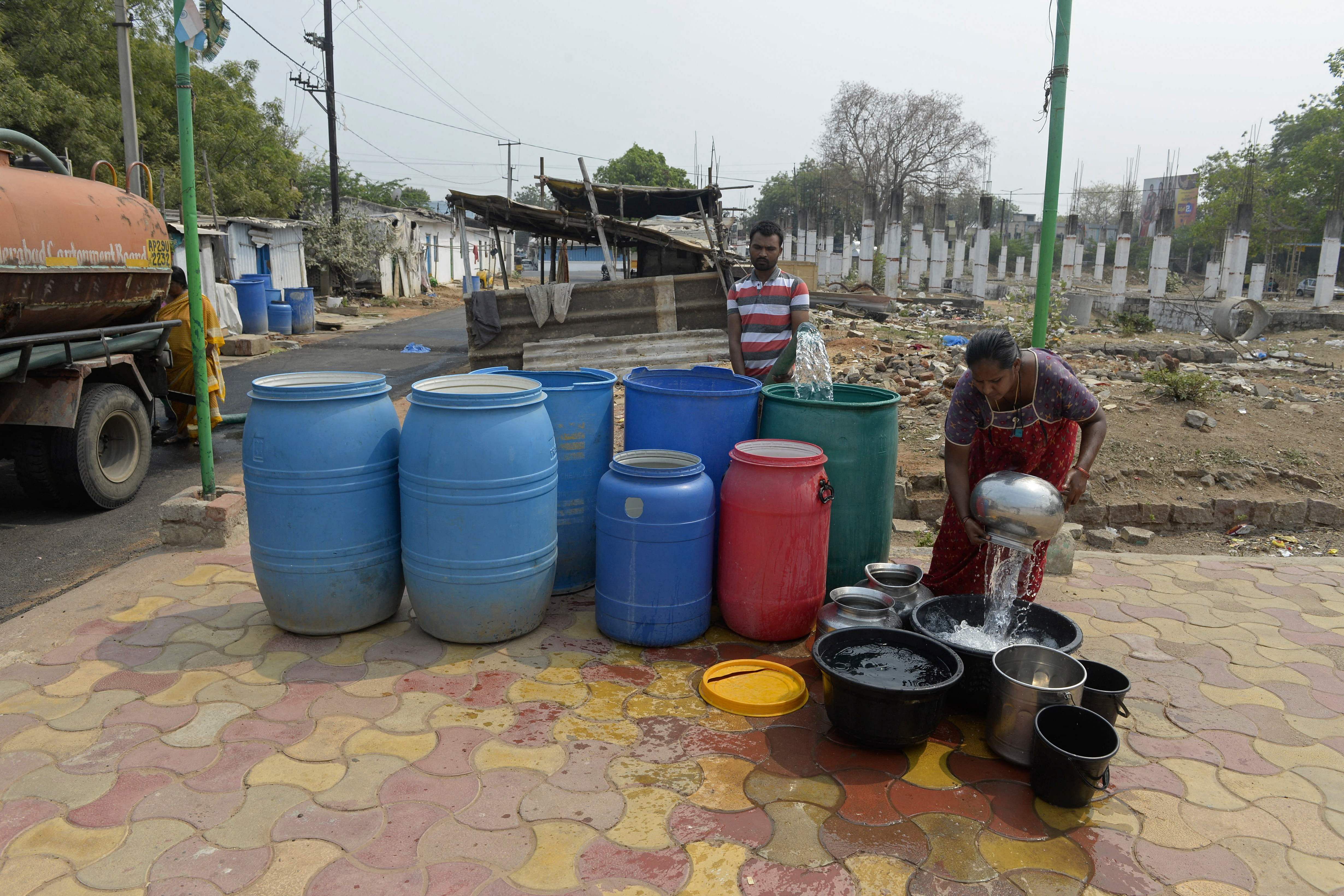Four in 10 people worldwide do not have enough safe drinking water. By 2050, more than half of the global population is expected to face water stress, which arises when demand outstrips available water resources. Credit: AFP Photo
More than 200 crore people live in countries experiencing water stress, and an estimated 400 crore people live in areas that suffer from severe water scarcity for at least one month per year. Credit: AFP Photo
One in five children worldwide do not have enough water to meet their daily needs, and children in more than 80 countries live in areas with high water vulnerability, meaning they depend on surface water, unimproved sources or water that takes more than 30 minutes to collect. Credit: Reuters Photo
Eastern and southern Africa have the highest proportion of children living in such areas, with 58% facing difficulty accessing sufficient water every day. Credit: Reuters
Providing access to safe drinking water and sanitation in 140 low and middle-income countries would cost $114 billion per year, whereas the many social and economic benefits of safe water are hard to evaluate. Credit: AFP Photo
Global freshwater use has increased six-fold over the past 100 years and continues to grow at a rate of about 1% per year since the 1980s. Credit: Reuters Photo
Agriculture accounts for nearly 70% of global water withdrawals, mainly for irrigation but also for livestock and aquaculture. The ratio can reach up to 95% in some developing countries. Credit: AFP Photo
Climate change is altering rainfall patterns, reducing water availability, and worsening the damage caused by floods and drought around the world. Credit: AFP Photo
The melting of ice cover and glaciers – known as the water towers of the world - is leading to more hazards such as flash floods in the short-term, while threatening to reduce water supplies for hundreds of millions of people in the future. Credit: AFP Photo
Published 22 March 2021, 10:23 IST








